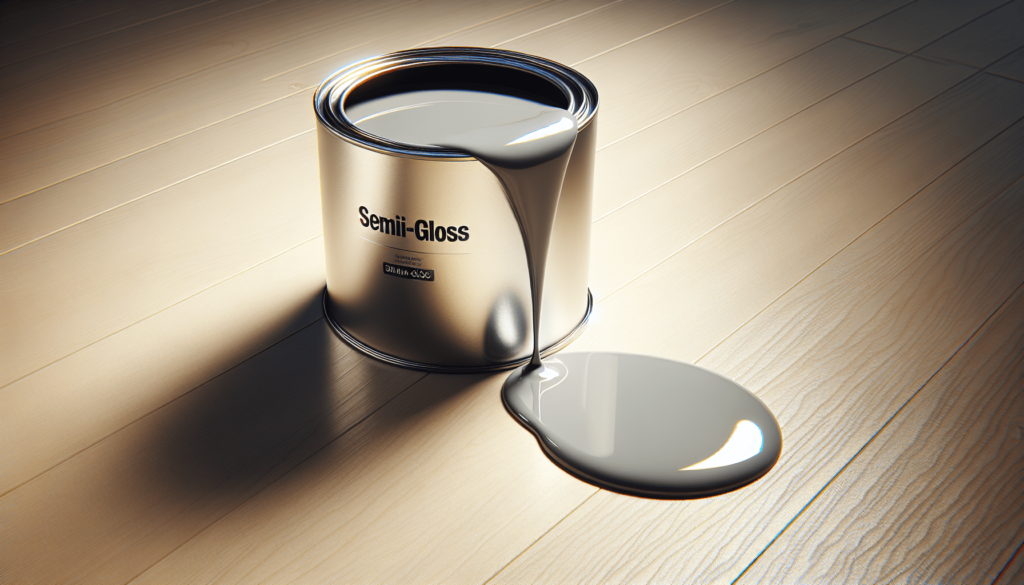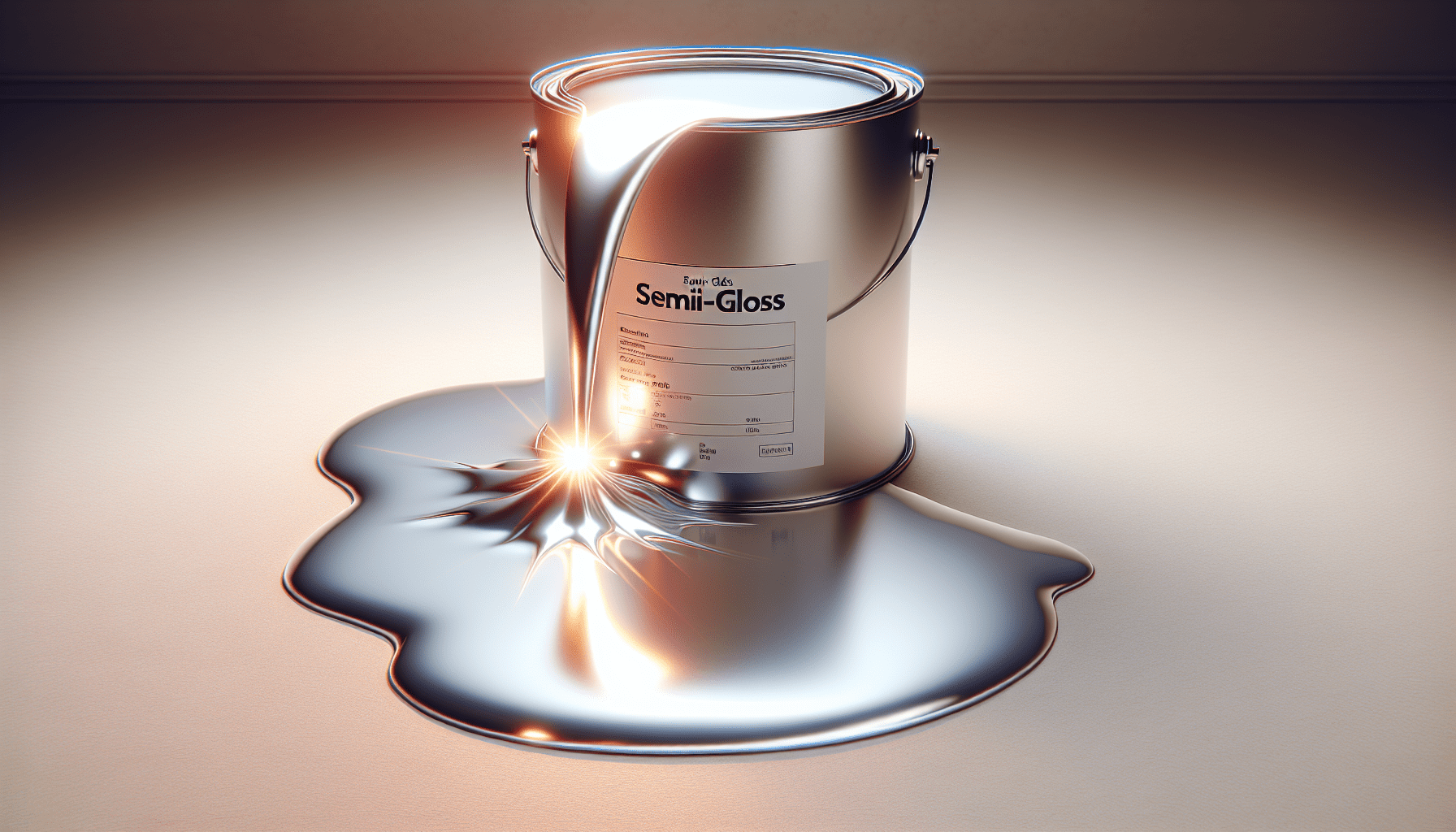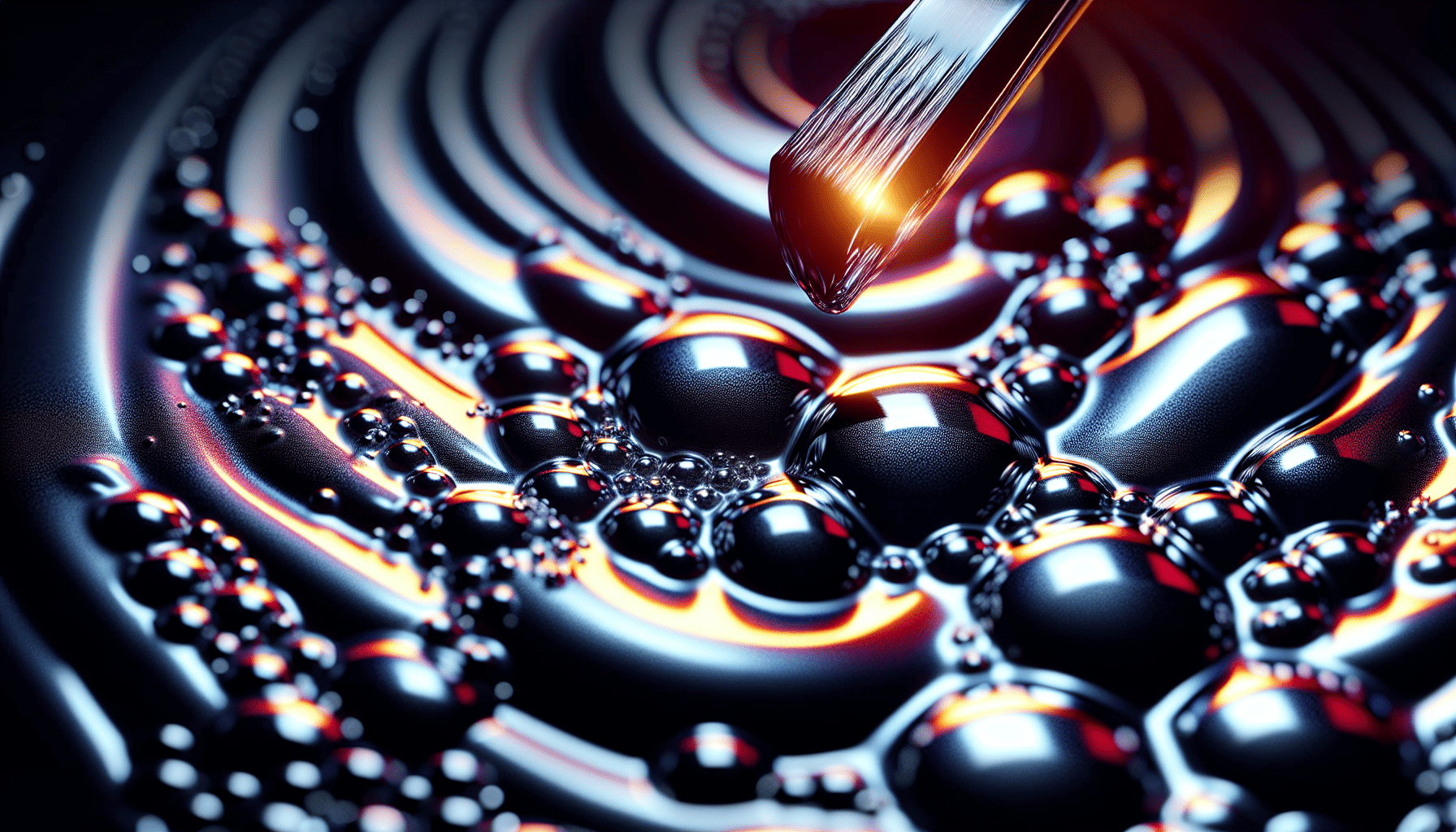In the realm of painting, selecting the appropriate type of paint can greatly influence the outcome of your project. As you evaluate your options, understanding the specific characteristics of semi-gloss paint is crucial. Semi-gloss paint, often chosen for its durable finish and ease of cleaning, raises questions about its composition. This article, titled “Is Semi Gloss Paint Oil Based,” delves into the essential details you need to know about the types of semi-gloss paint available, specifically examining whether they are oil-based or possess an alternative formulation, empowering you to make an informed decision for your next painting endeavor. Have you ever found yourself puzzled over whether semi-gloss paint is oil-based or not? This can be a common question, especially if you are new to paint selection and home improvement projects. Understanding the type of paint you are dealing with is essential for several reasons, including application, durability, and clean-up processes.
Understanding Semi-Gloss Paint
What is Semi-Gloss Paint?
Semi-gloss paint is a type of paint finish that lies somewhere between a flat/matte finish and a high-gloss finish. This means it has a noticeable sheen that reflects light, giving surfaces a subtle shine. It’s a popular choice for areas that require frequent cleaning, such as kitchens, bathrooms, doors, and trim.
Characteristics of Semi-Gloss Paint
This type of paint is known for its durability and ease of cleaning. The semi-gloss finish ensures that the paint is resistant to moisture, making it suitable for high-humidity areas. It’s also less prone to showing imperfections compared to a high-gloss finish but offers more shiny elegance than a matte finish.
Applications
Semi-gloss paint is often used in areas that experience a lot of wear and tear. It is ideal for:
- Kitchens
- Bathrooms
- Doors
- Trim and molding
- Furniture
Its ability to withstand scrubbing and cleaning makes it a practical choice for these areas.
Types of Paint Bases
Oil-Based Paint
Historically, oil-based paints were the standard choice for many home improvement projects. They are known for their durability and smooth finish. However, oil-based paints have fallen out of favor due to their high levels of volatile organic compounds (VOCs) and the need for harsh solvents for clean-up.
Water-Based Paint (Latex)
Water-based paints, also known as latex paints, have become the go-to choice for many DIY enthusiasts and professionals alike. These paints are user-friendly, dry quickly, and have lower VOC levels, making them more environmentally friendly. Clean-up is also simpler, requiring only soap and water.
Differences Between Oil-Based and Water-Based Paints
| Feature | Oil-Based Paint | Water-Based Paint |
|---|---|---|
| Durability | Highly durable | Durable but less than oil-based |
| Drying Time | Takes longer to dry | Dries quickly |
| VOC Levels | High VOC levels | Low VOC levels |
| Clean-Up | Requires solvents like mineral spirits | Requires soap and water |
| Finish Quality | Very smooth finish | Smooth but can be less than oil-based |
| Environmental Impact | Less eco-friendly | More eco-friendly |
These differences are critical when making a decision about which type of paint to use for your specific project.

Is Semi-Gloss Paint Oil-Based?
Historical Perspective
Historically, semi-gloss paints were predominantly oil-based due to their superior durability and finish quality. They were the go-to choice for high-traffic areas and surfaces that needed regular cleaning.
Modern Choices
Today, semi-gloss paints are available in both oil-based and water-based formulations. Technological advancements have made water-based semi-gloss paints nearly as durable and rich in finish quality as their oil-based counterparts.
How to Determine the Base of Semi-Gloss Paint
When you’re unsure whether a semi-gloss paint is oil-based or water-based, you can usually find this information on the paint can or product specifications. Key terms to look for include:
- Oil-based: Also known as alkyd
- Water-based: Also referred to as latex or acrylic
Comparative Analysis
| Feature | Oil-Based Semi-Gloss Paint | Water-Based Semi-Gloss Paint |
|---|---|---|
| Durability | Extremely durable | Very durable |
| VOC Content | High VOC content | Low VOC content |
| Application Ease | Smooth application, longer working time | Easier application, quick drying |
| Clean-Up | Solvents required like mineral spirits | Easy clean-up with soap and water |
| Environmental Impact | Higher impact due to VOCs | Lower impact, eco-friendlier |
| Availability | Becoming less common | Widely available |
These factors should help you make an informed choice depending on the requirements specific to your project.
Benefits and Drawbacks
Benefits of Oil-Based Semi-Gloss Paint
- Durability: Oil-based paints provide a highly durable, hard finish that is ideal for high-traffic areas.
- Smooth Finish: They offer a smoother finish, which makes them perfect for furniture and trim.
- Resistance: Better resistance to moisture and stains.
Drawbacks of Oil-Based Semi-Gloss Paint
- High VOCs: Contributes to indoor air pollution.
- Long Drying Time: Takes longer to dry, which can slow down your project.
- Labor-Intensive Clean-Up: Requires solvents like mineral spirits for clean-up.
Benefits of Water-Based Semi-Gloss Paint
- Low VOCs: Safer for indoor use and more environmentally friendly.
- Quick Drying: Speeds up the overall project timeline.
- Simple Clean-Up: Requires only soap and water for clean-up.
Drawbacks of Water-Based Semi-Gloss Paint
- Durability: Though highly durable, it may not be as hard as oil-based finishes.
- Finish Quality: Some applications may not achieve the same level of smoothness as oil-based paints.

Best Practices for Application
Preparation
Proper preparation is crucial for achieving the best results with semi-gloss paint. Whether you’re using oil-based or water-based paint, make sure to clean the surface thoroughly. Remove any dirt, grease, or mildew to ensure that the paint adheres well.
Priming
Priming is essential, especially when dealing with surfaces previously painted with a different type of paint. An appropriate primer will also help improve the durability and finish of the semi-gloss paint.
Application Techniques
Oil-Based Semi-Gloss Paint
- Use a High-Quality Brush: A natural-bristle brush works best.
- Thin Coats: Apply thin, even coats to avoid drips and runs.
- Drying Time: Allow ample drying time between coats.
Water-Based Semi-Gloss Paint
- Synthetic Brush or Roller: Use a synthetic-bristle brush or high-density foam roller.
- Thin Coats: Apply thin, even coats for the best results.
- Quick Drying: Be mindful of quick drying times to avoid lap marks.
Clean-Up
Oil-Based Paint
Clean up with mineral spirits or turpentine. Make sure to follow safety instructions to avoid exposure to harmful fumes.
Water-Based Paint
Simple soap and water can be used for clean-up. This makes the process much more straightforward and less taxing on your health and the environment.
Environmental and Health Considerations
VOC Levels
One of the most significant differences between oil-based and water-based semi-gloss paints is the level of volatile organic compounds (VOCs) they emit. High VOC levels in oil-based paints can contribute to indoor air pollution and affect respiratory health.
Disposal
Proper disposal is crucial for both types of paints, but especially for oil-based paints, given their chemical composition. Always follow local regulations for disposal to mitigate environmental impact.
Eco-Friendly Options
Several manufacturers are now producing eco-friendly, low-VOC semi-gloss paints. These products are designed to offer the durability and finish quality of traditional paints while being safer for you and the environment.
FAQs
Is oil-based semi-gloss paint more durable than water-based?
Generally, oil-based semi-gloss paints are more durable, but advancements in water-based paints have made them a competitive option.
How can I tell if my older semi-gloss paint is oil-based?
You can perform a test by rubbing a cotton ball soaked in rubbing alcohol on the painted surface. If the paint comes off, it is likely water-based. If it remains intact, it is probably oil-based.
Can I paint over oil-based semi-gloss with water-based semi-gloss?
Yes, but it requires proper preparation, including thorough cleaning and the application of a high-quality primer designed to work as a bridge between oil and water-based paints.
Conclusion
When faced with the question, “Is semi-gloss paint oil-based?” the answer is that it can be both, but the trend is shifting towards water-based options due to their environmental benefits and ease of use. By understanding the characteristics, benefits, and drawbacks of each type, you can make an informed choice that best suits your project requirements. Whether you prioritize durability, environmental impact, or ease of application, knowing these details will help you select the perfect semi-gloss paint for your needs.



